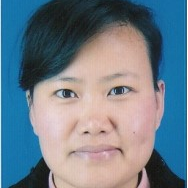Smart Internet of Things for Industry and Manufacturing Processes
A special issue of Processes (ISSN 2227-9717). This special issue belongs to the section "Advanced Digital and Other Processes".
Deadline for manuscript submissions: 30 April 2024 | Viewed by 3955
Special Issue Editors
Interests: edge networks; IoT; 5G/6G networks; edge intelligence; sensor networks
Interests: edge networks; IoT; blockchain; sensor networks; AI
Interests: heterogeneous networks; ubiquitous networks; software-defined mobile networks; deep reinforcement learning; wireless resource management; network optimization algorithm; edge offloading computation and caching; cooperative positioning; cellular network traffic prediction
Interests: edge networks; IoT; 5G/6G networks; edge intelligence; sensor networks
Special Issue Information
Dear Colleagues,
The Internet of Things (IoT) has received substantial attention over the past several years. It is predicted that in 2025, the number of connections in the world will reach 100 billion, and the number of global smart terminals will reach 40 billion, generating 180 ZB of data per year. On the other hand, in the smart IoT era, network-connected objects have developed into a large-scale autonomous intelligent group collaboration system that integrates people, machines, and things. It is known that cloud computing cannot meet the computing demands of the explosively growing volume of massive data, and thus the continuous development of artificial intelligence (AI) on the edge has become key to managing the flood of data. In edge environments of IoT, there are diverse applications, where there are a huge number of collaborations between human, machines and things. They require strong interactivity, fast response and highly adaptive behavior. Additionally, their requirements are often cross-domain, and this brings much more difficulty. In addition, the resources of edge networks are heterogeneous and diverse. Further, the computing resources are distributed in the cloud, edge and terminal devices. Therefore, efficiently using the distributed computing resources according to the task requirements is a great challenge. In response to the above problems, AI should be pushed to edge devices (base stations, terminals), with a reasonable amount of AI in edge devices, and a knowledge-driven edge network should be constructed for IoT applications. Knowledge-driven networks that integrate communication, computing, storage, perception, and control can realize the collaboration of wireless multi-access networks, mass terminals, and diversified services through knowledge generation, knowledge combination, and knowledge distribution to improve network performance and data privacy protection capabilities. These efforts could achieve multi-node autonomous collaboration, the seamless flow of information, and distributed intelligent collaboration in computing to meet the service demands of the smart IoT.
The aim of this Special Issue is to develop theories and key technologies of knowledge-driven networks for smart IoT based on research results in artificial intelligence, computers, communication, control and other related fields. Potential topics include, but are not limited to, the following:
- Knowledge-driven network architecture of smart IoT edge networks;
- Evolution mechanism and optimization control mechanism of knowledge-driven edge networks;
- On-demand dynamic networking theory and key technologies of smart edge networks;
- Collaboration of resources and AI;
- Security and trust mechanisms for smart edge networks;
- Dynamic resource adaptation mechanisms based on SDN and NFV integration;
- Fast routing decision algorithms based on machine learning;
- Dynamic access network selection/adaptive spectrum resource assignment;
- Security detection and trusted identification methods for IoT terminals;
- Blockchain-based secure and trusted access control strategy for IoT;
- Distributed edge collaboration mechanism for IoT based on federated learning.
Prof. Dr. Tiecheng Song
Dr. Inayat Ali
Dr. Geng Chen
Prof. Dr. Xiaorong Zhu
Dr. Xujie Li
Guest Editors
Manuscript Submission Information
Manuscripts should be submitted online at www.mdpi.com by registering and logging in to this website. Once you are registered, click here to go to the submission form. Manuscripts can be submitted until the deadline. All submissions that pass pre-check are peer-reviewed. Accepted papers will be published continuously in the journal (as soon as accepted) and will be listed together on the special issue website. Research articles, review articles as well as short communications are invited. For planned papers, a title and short abstract (about 100 words) can be sent to the Editorial Office for announcement on this website.
Submitted manuscripts should not have been published previously, nor be under consideration for publication elsewhere (except conference proceedings papers). All manuscripts are thoroughly refereed through a single-blind peer-review process. A guide for authors and other relevant information for submission of manuscripts is available on the Instructions for Authors page. Processes is an international peer-reviewed open access monthly journal published by MDPI.
Please visit the Instructions for Authors page before submitting a manuscript. The Article Processing Charge (APC) for publication in this open access journal is 2400 CHF (Swiss Francs). Submitted papers should be well formatted and use good English. Authors may use MDPI's English editing service prior to publication or during author revisions.
Keywords
- IoT
- edge network
- edge intelligence
- distributed computing
- sensor network









